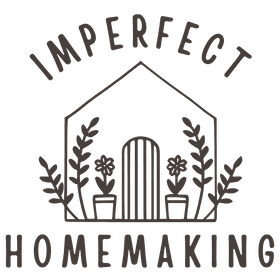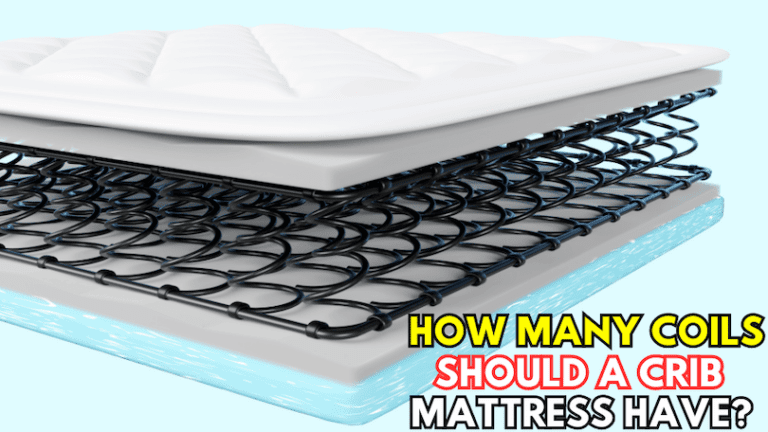Tips for Kitchen Scraps Reuse and Home Sustainability
At home, I’m always a mother first and good homemaking comes after that. But, that doesn’t mean I shy away from sustainable home practices. There are simple habits that you can blend into your routine, and it goes a long way to ensuring sustainability at home.
If you’re new to the space, hi there! My name’s Kelleigh, and I’m a mother balancing imperfect homemaking, and peppering it with eco-friendly practices wherever I can.
So, let’s get started. I’ll share with you my tips to repurpose kitchen scraps, incorporate sustainable laundry routines, and do daily chores while still keeping your little (or not-so-little) angels engaged.

Table of Contents
Repurposing Kitchen Scraps: Value From Waste
You learn a lot about turning waste into resources when you deal with a ton of kitchen scraps at home.
I’ve got six kids running around the house, so, waste is definitely a challenge to deal with. I’ve got a fussy toddler and an energetic younger child. My older children are also learning to prepare meals, and then there are the school lunches, my break time coffees, and whatnot.
So, here’s how I reuse the kitchen scraps.

1. Composting
This is one of the more common ways to ensure your veggie, fruit, and other meal scraps are used to create rich, nutritious soil for your home garden.
- I have a composting bin similar to this one, and I usually toss in veggie and fruit peels, well-crushed eggshells, coffee grounds, plant cuts, old flowers, grass cuts, used tea, and more.
- With time, these scraps will break down to give you homemade fertilizer and I use this to grow my little home garden (I’m trying to grow some peas right now, so fingers crossed).
2. DIY Non-Toxic Cleaners
Sometimes, a little maintenance cleaning can do a lot for hygiene at home. And I love using citrus peels to target dirt and stains at home. Not to mention, they make the home smell wonderful! Don’t forget to check out my recipe for homemade air freshener too.
- Collect enough citrus peels (they can be orange, lemon), put them in an airtight glass jar, and pour in enough vinegar to soak the peels.
- Simply let this solution sit for a week and transfer it into a spray bottle for a natural way to clean your kitchen countertop, glass surfaces, remove odors, etc.
- If you are spot-cleaning stains from mattresses, fitted sheets, etc., mix in baking soda with this solution, let it sit on the spots for a while, and blot out the stains.

You can use a similar cleaning solution to clean your sink too. I also have a detailed spring cleaning checklist if you are interested.
3. Cooking with Leftovers
If you’ve got casseroles, steamed veggies, or other cooked food leftover after a meal, you can try turning them into party snacks or finger foods like loaded nachos, delicious salads, stuffed dumplings, and more.
- You can also air-fry your veggies with breadcrumbs and mild spices to make crispy but healthy snacks for your children.
- While the recipes are endless, just make sure you keep the cooking as simple as you can. This way, you are not exhausting yourself thinking of sustainable ways to use the leftovers.
4. Self-Care from Scraps
Seems a little unusual, right? But hear me out. You can make a coffee scrub out of your coffee scraps. This is especially useful if you live in cold environments like I do, or you wash your hands quite frequently, leading to dry or flaky skin.

- How to make it – Collect a bowl full of dried coffee grounds (coarse to fine powder), add in about 1 tablespoon of coconut oil (almond oil works too) and give it a good mix. The mix should have a mild sheen to it, but not look overly moist. You can adjust as needed to get to this texture.
- How to store it – Transfer this mixture into an airtight, dispenser-style container for easy use. You can repurpose your old spice/seasoning containers to store this scrub.
- How to use it – After every hand wash, dab a small amount of coffee scrub onto your wet hands and work it into your palms and between your fingers. Then, simply wash it off, and you’ll notice your hands feel smoother than usual!
P.S. Always make sure the coffee grounds are completely dry before you make a coffee scrub. Moisture might contaminate the mix, so keep the lid shut tight when it’s not in use. You can also add shea butter to the mix, for extra nourishing.
More Self Care Solutions!
Do your feet hurt, or maybe smell, after a long day? Fill up some hot water in a wide bucket, drop in a few used (but clean) lemon or orange peels, and just soak your feet in. The hot water is going to help relax your senses and the lemon will help remove odor-causing bacteria, making you feel fresh.
Sustainable Laundry Care: Extending Life for Clothes
After years of learning, I’ve understood that sustainability is not just about repurposing or reducing. It’s about making your everyday tools last longer with maintenance, repairs, and gentle cleaning.
The same for your wardrobe – the better you maintain your clothes, the less you will need to buy new ones. This way, you don’t throw away old clothes on a whim, and even if it has come to the disposal stage, you do it responsibly.
1. Extra Care for Your Delicate Inner Wear
The spin and tumble dry cycles in a washing machine can loosen the elastic straps, twist up the shape of the cups, or cause unnecessary wear and tear in your bras and other delicate inner wear.

- While it’s best to hand-wash your bras, I understand that it is not always doable. So, if you machine-wash regularly, place your inner wear in a mesh laundry bag to protect them as much as you can.
- Please try to wash your bras on a separate cycle, and use mild detergent to get any stains out. Also, it helps if you let your bras air-dry rather than use a tumble dryer to minimize tearing and more.
2. Get the Right Fit on the First Buy
Bra purchases are always a hit or a miss. But when it’s a miss, we just tend to stop wearing them or throw them away. And so many such bras end up in landfills every year. That’s why it helps to get the fit right.
- When your bra fits well, you need not worry about the cups losing shape, the straps stretching out of shape, or the underwire digging into the skin.
- It also helps to understand how breast shape changes throughout your lifetime, and find bras that can adjust to those changes.
I have a bra size calculator on this website that will help you measure your bust size and find fits accordingly. In the post, I also elaborate on the signs of an ill-fitting bra, and the types of bras that can best suit your needs.
Multitasking as a Parent: Baby Play Tools
When I’m doing a chore around the house, it’s never one chore, it’s always chores – in the multiples and all at the same time.
I’m prepping lunch, and making coffee, and doing laundry, and watching my baby – all at once. So, it helps to have some useful but safe play tools that make baby care easier.

1. Baby Jumpers
Jumpers are always so much fun, for me and for my baby. I usually settle down with a cup of coffee and watch my child jump around once the laundry is done.
- You can start using jumpers for your baby once they develop good head and neck control, which is a milestone that happens after 4–6 months of age.
- I supervise my baby and let him bounce around in the jumper for about 15 minutes. After that, I settle him down for some tummy time.
If you are unsure about baby jumpers and the right time to use them for your child, you can check out my post on when to use baby jumpers for the full picture.
2. Baby Swings
Baby jumpers are great if you want your baby to expend their energy in a constructive way. But if they are already in a tired or semi-sleepy but fussy state, baby swings can help to soothe and calm your baby.
- Lots of modern baby swings have toys and music features, which help to keep your baby engaged for almost 15–20 minutes, with gentle vibrations and more.
- This usually allows me enough time to finish lunch prep or laundry, after which I place him in the crib for nap time.
Summarizing Sustainability at Home
There are simple eco-friendly practices you can nurture at home by reusing kitchen scraps multiple ways, and even indulging in responsible laundry routines to make your clothes last longer. And as a mother, I can tell you with certainty that you can do all this and more while you balance baby care and daily chores.
There are compact composting bins you can use to reduce food waste, and also find creative ways to use leftovers. Some kitchen scraps can also be used to make natural cleaners. You can even go the self-care route with scrubs and foot soaks to repurpose kitchen scraps like coffee grounds or citrus peels.
Sustainability is also about extending the life of the products you use at home. This includes taking care of your clothes, especially the delicate ones. And if you are a mother juggling child care with chores at home, it also may be a good idea to invest in baby jumpers or baby swings to make things easier for you.
I hope you found this guide useful!






